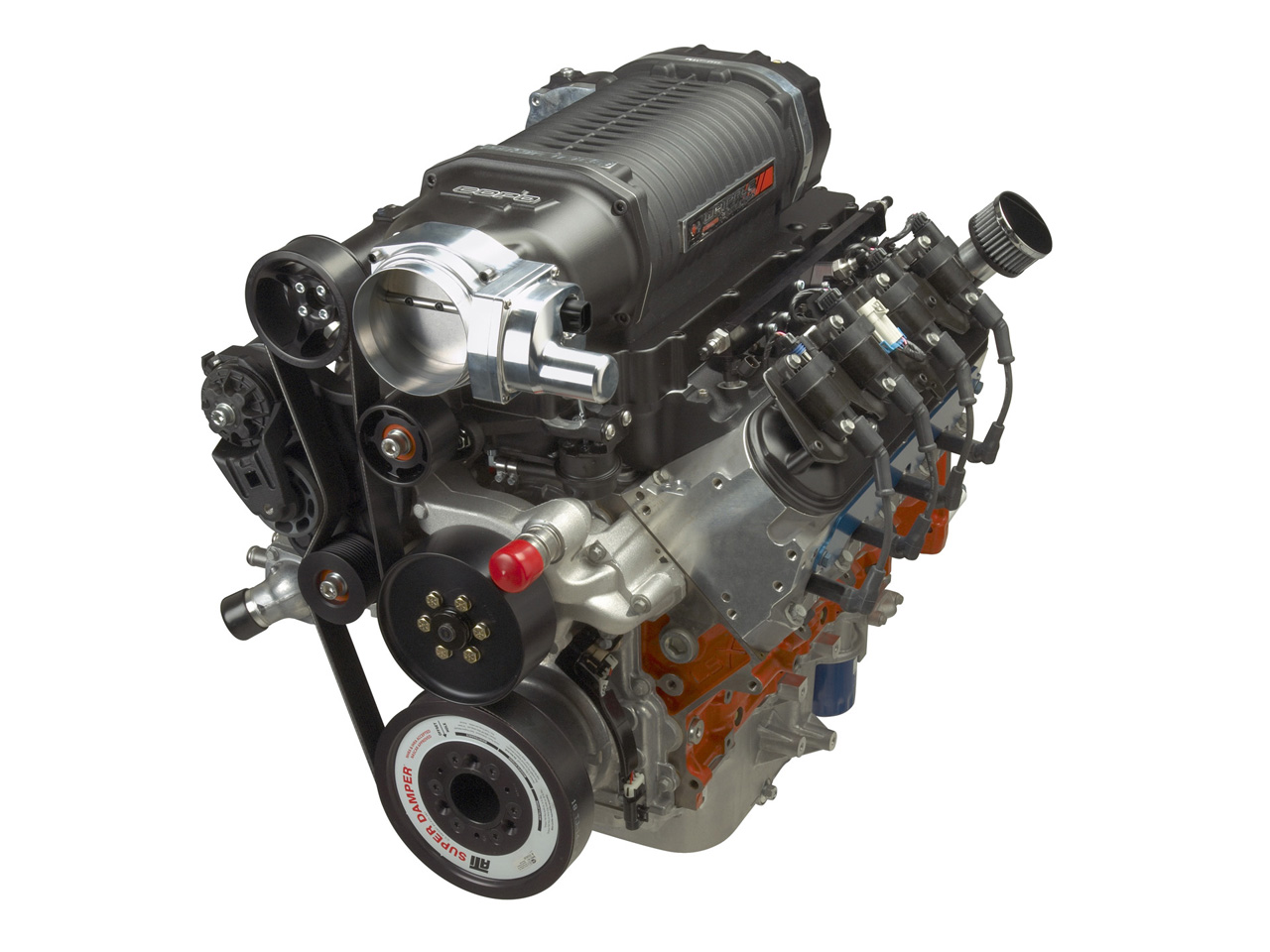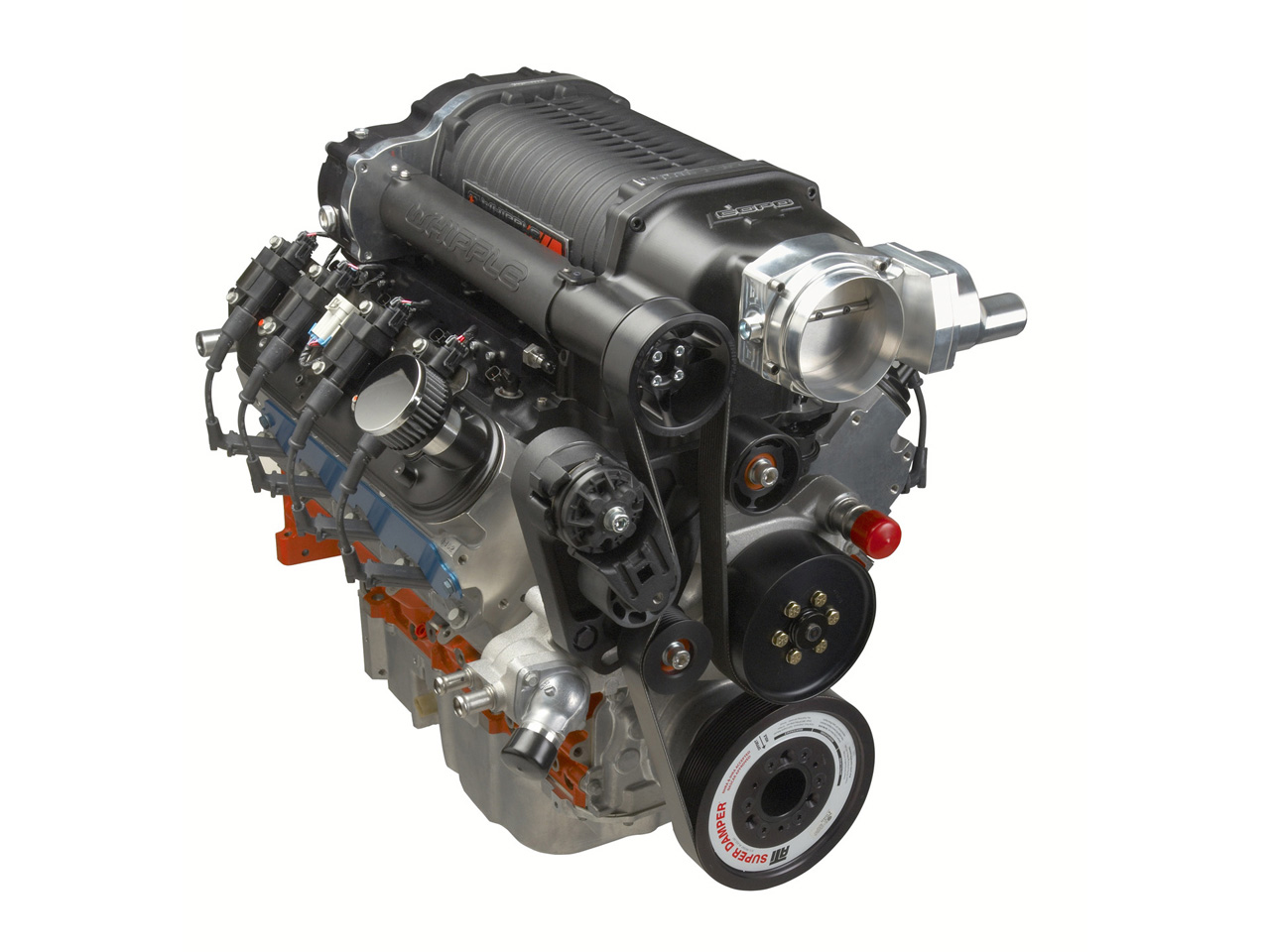2011 Chevrolet COPO Camaro Concept
|
Price |
-- |
Production |
-- | ||
|
Engine |
5.3 liter V8 |
Weight |
-- | ||
|
Aspiration |
supercharged |
Torque |
-- | ||
|
HP |
-- |
HP/Weight |
-- | ||
|
HP/Liter |
-- |
1/4 mile |
-- | ||
|
0-62 mph |
-- |
Top Speed |
-- |
(from Chevrolet Press
Release) Chevrolet Introduces New ‘COPO’ Camaro Concept evokes
the spirit of special-order models for Stock Eliminator competition
LAS VEGAS – The COPO Camaro is back at Chevrolet, as a concept
designed to the specifications for NHRA Stock Eliminator drag racing
competition.
“The COPO Camaro is a proof of concept for what a Chevrolet Stock
Eliminator entry could look like,” said Jim Campbell, GM U.S. vice
president of Performance Vehicles and Motorsports. “And it is a
clear indication that Chevrolet intends to homologate the Camaro for
sportsman drag racing.”
The COPO concept vehicle is designed to accommodate more than one
engine option, including a naturally aspirated 427 engine (7.0L) –
the same displacement as the original COPO Camaros from 1969 – and a
supercharged 327 (5.3L) engine. Among the many racing-specific
features and equipment is a conversion from the Camaro’s standard
independent rear axle to a solid axle, as well as a full chrome moly
roll cage.
The basic content for the COPO Camaro Concept includes:
29x9-inch rear radial racing slicks and 4.5x28x15-inch front
tires
The interior is all business, with most sound deadening and power accessories deleted. Instead, there is pair of racing bucket seats (and no rear seat), a safety harness for the driver, a competition floor shifter and Chevrolet Performance gauges by Auto Meter.
The engines
Intended for NHRA’s various Stock Eliminator classes, the COPO Camaro concept has provisions for two distinct engine packages – each built to conform to class guidelines. The details below outline the core specifications of each engine and their intended classes.
The concept vehicle is powered by a prototype version of the supercharged 327 engine, featuring an LSX cylinder block.
The COPO legacy
Since 1955, NHRA Stock
Eliminator has been a straight-line proving ground for the quickest
cars to come out of Detroit. Within Stock Eliminator, there are many
classes, all defined by the ratio of vehicle shipping weight and the
assigned horsepower factor. Because of this tightly monitored set of
rules and historically brutal competition, Stock Eliminator is the
ultimate test for factory muscle cars.
From the “Fuelie” ’57 Bel Air to the ’62 409 Impala and countless
muscle cars that came later, Chevrolet has enjoyed a long, dominant
position in this sportsman drag racing category. None of the cars,
however, have dominated both the track and muscle car folklore like
the legendary COPO Camaros produced in 1969.
In the Sixties, COPO was the acronym for Central Office Production
Order, within Chevrolet’s vehicle special-order program. Although
normally used for fleet orders of trucks and company-owned cars, it
was manipulated by a few performance-minded dealers to order
vehicles with larger engines than were available in
regular-production models – mostly with the intent of getting them
to Stock Eliminator racers.
By pushing Chevrolet’s Central Office Production Order special-order
program to its limit, a number of dealers were able to get
427-cubic-inch big-block engines installed in a handful of Camaros,
when the largest official engine available was a 396. Two versions
of the 427 engine were wrangled out of the factory: COPO 9561 was
the Corvette-based L-72 edition with an iron cylinder block and COPO
9560 was the racing-designed ZL1 engine with a lighter aluminum
cylinder block.
The COPO Camaros opened up the NHRA rulebook to some exciting
combinations for Camaro, helping keep Chevrolet at the top of the
ultra-competitive form of motorsports. In fact, they were not only
competitive in NHRA Stock Eliminator when new, but still hold the
national ET and MPH records in several classes.
Racing enthusiasts who are interested in more information can go to
www.gmperformanceparts.com to sign up for COPO Camaro concept
updates.



